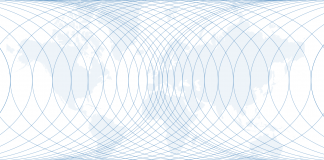A month and a half ago, right after the attempted Wagner coup, there appeared to be chaos in Moscow, with the future of President Vladimir Putin in question. There were indications of some movement toward negotiations in the war. Some of those contacts were public. The director of the CIA, while on a visit to Ukraine, had an extended telephone conversation with the head of Russian intelligence. What was said is unknown, but it is unlikely that the two intelligence chiefs spoke without prior discussion at lower levels. Given the nature of this war, it’s unlikely that contact between Russia and the United States, however trivial and ineffective, hasn’t been underway throughout.
The war appeared to have two limits. The United States would not deploy significant force in Ukraine or fire on Russian forces. The Russians would attack Ukrainian forces but not American supply depots in Poland. This meant that the war would not pit Russian and U.S. forces directly against each other, continuing the understanding in place since 1945, overwhelmingly but not absolutely honored. Strategic combat would be between Ukraine, supplied by the U.S., and Russia. That agreement holds and limits the global risks in the war. It may have just worked out that way, but I expect some explicit understanding was reached. The Wagner incident must have worried Washington as to who was in control in Moscow and raised questions about whether the understanding was still in place. The transfer of Wagner fighters to Belarus and to Poland’s border must have increased worries.
Two things became unlikely: that Russia would destroy the Ukrainian army and occupy Ukraine, and that Ukraine’s army would drive Russia out of Ukraine. The only logical step is a negotiated settlement. The question is what that settlement might consist of. The only logical settlement – on the surface, at least – is a division of Ukraine. One option might be that Donbas, full of ethnic Russians and on Russia’s border, is ceded to Moscow. But Ukraine cannot cede more – or even this – because it reasonably doesn’t trust the Russians not to base a force there and attack again in the future. The Russians will have a great deal of trouble accepting this. They have lost much in the war, and returning with only Donbas would be an insult to the dead and devastating to Putin. Ukraine must have a militarily defensible boundary and a shallow concession. Russia must validate the claim that it is a great power and can settle for far more than Ukraine can concede. Each side must make a powerful move to convince the other that a bad compromise is better than defeat.
I had thought that Russia might launch a powerful offensive designed to shatter the Ukrainian army and begin taking Ukrainian territory, forcing a settlement. I was surprised that it did not do so. I then realized that the Russian army does not have the ability to organize such an attack or to accept those kinds of casualties. Putin used Wagner as a separate force because he understood the limits of his enemy. When that blew up in his face, he realized what I missed: that his military was in no position to launch a final assault, and that he was in no position to negotiate.
Ukraine’s problem is that it does not control most of its logistical system and its prime supplier, the United States, has somewhat different if overlapping interests. The Ukrainians’ goal is to defeat the Russians and regain all of Ukraine. The American interest in defending Ukraine is both an end in itself and the means toward another end. The U.S. must keep Russia from moving west and creating a new and very costly cold war. The U.S. also wants to demonstrate to the world that it is in a position to militarily participate in Ukraine’s defense so long as Ukraine is prepared to defend itself. Another obvious object of the lesson is China and its periphery, particularly Taiwan. In a way, this is the final repudiation of the Vietnam model, where U.S. forces engaged in direct combat because the South Vietnamese were unable or unwilling to. In Ukraine, the U.S. avoided the body bags that came home during Vietnam and also showed the power of logistical support.
If it is accurate that Russia cannot launch a decisive ground attack, then it must do something indirectly to drive a wedge between Ukraine and the United States. The Kremlin knows that a full break is impossible, but a break on peace terms may well be possible. One Russian strategy that is failing is supporting a Vietnam-style antiwar movement in the United States. There is one, but it is not as powerful as the Vietnam antiwar strategy was.
An alternative is to drive a wedge between the U.S. and other allies. The U.S. needs allies in the region, and pleasing Ukraine while alienating them is unsupportable. The Russian decision to move vessels into the Black Sea achieved two things. Ukraine is a major exporter of grains, and cutting off those grains would cause problems in general and likely disaster in Africa. The Russians would hope to shape this into international demand for a settlement, more on Russian terms.
Their other goal would be to split NATO. The Black Sea includes NATO states like Romania. The presence of a small Russian fleet near its coast might force the Romanians to demand that a settlement be reached. Both of these are strategies of misdirection, used when direct power is not available. However, ships are very vulnerable these days – to air power, missiles and drones. Thus, the Ukrainians attacked Russian ships, sensing the importance not only of their exports but also of showing the Americans that they remain a serious force. The attacks also increase the sense of Russia’s vulnerability.
There are, as I said, informal talks underway. The Russians must decide whether to double down on the Black Sea strategy, seek another flank to hit or accept a settlement that gains them little but does not humiliate them. It is a question of how far Putin’s hubris goes and how secure he is.





 2025 Forecast: The World Without an Anchor
2025 Forecast: The World Without an Anchor